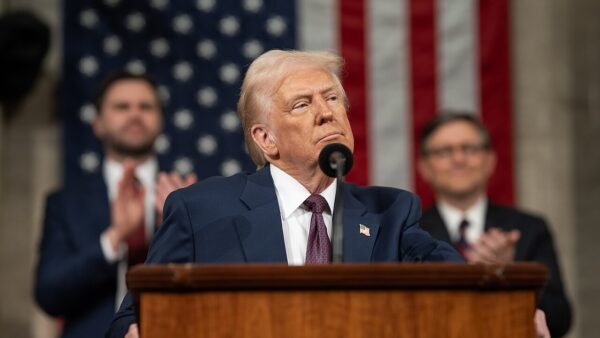Laos, Myanmar, Cambodia and Pakistan may be under-reporting cases of Covid-19 to avoid antagonising China, on whom they rely for major investments in infrastructure, the analyst Fitch Solutions said in a research note yesterday.
Laos and Myanmar have yet to report a single case, while Cambodia is reporting one and Pakistan has logged five so far.
This appears anomalous because Chinese companies and workers had a heavy presence in those countries before the outbreak in Wuhan captured international attention.
Fitch said poor healthcare systems might go some way to explaining the low numbers.
But it added that “a desire to avoid antagonising China by ‘overreacting’ to the outbreak” is also a cause.
The four countries are all participating in China’s Belt and Road Initiative, which gives them access to capital for infrastructure in exchange for loyalty to China.
China, meanwhile, has repeatedly voiced displeasure with countries instituting travel restrictions against its citizens.
Fitch warned that under-reporting Covid-19 would hamper countries’ response to the crisis and worsen the spread of the virus around the globe.
Cambodia: solidarity with China
Fitch singled out Cambodia as a “clear example of a country downplaying the threat of the virus due to the economy’s high dependence on China”.
Its single confirmed case is hard to square with the fact that Chinese travellers account for more than a third of Cambodia’s tourist arrivals, while many Chinese people have been working on Chinese-led construction projects there.
Cambodia opted not to evacuate its citizens residing or studying in Wuhan, despite domestic pressure. Fitch surmises that Cambodia fears for hundreds of scholarships offered by the Chinese government to Cambodian students.
Nor did Cambodia impose travel restrictions. In fact, Cambodia’s Prime Minister, Hun Sen, visited China in February to show solidarity.
Hun Sen also reprimanded reporters for wearing masks during a press conference in January, saying they were inciting panic.
Pakistan: blame Iran
Pakistan wanted to close its borders with China, and suspended its flights with China on 31 January, after the World Health Organization declared the outbreak a global health emergency.
But flights resumed 48 hours later, on 2 February.
Pakistan also chose not to evacuate its 1,300 students from Hubei province despite protests from the students’ parents.
Authorities cited potentially inadequate isolation facilities and the cost burden should returnees cause a spread back home.
China praised Pakistan’s decision.
Like Cambodia, Pakistan may have wanted not to jeopardise future Chinese scholarships, said Fitch.
But is said Chinese investment in the massive China-Pakistan Economic Corridor – a network of transport, energy and industrial schemes – will have played a role as well.
Pakistan’s response to the outbreak in neighbouring Iran has been much stronger, Fitch noted.
On 27 February, Pakistan shut schools in several border areas and also suspended flights with Iran.
This came after Pakistan reported its first two cases of infection, linking them to the outbreak in Iran.
Said Fitch: “Indeed we believe that the number of Covid-19 cases in Pakistan is likely to be underreported, given the numerous Chinese-led projects on the China-Pakistan Economic Corridor (CPEC) which employ a large number of Chinese construction workers (between 10,000-15,000 according to local media), with at least some having returned to Pakistan after the Lunar New Year break in January.”
Laos: some restrictions
Laos has not reported a single Covid-19 infection, although it claims the ability to test for the virus.
However, in contrast to Cambodia and Pakistan, it has implemented some travel restrictions.
It suspended seven out of nine flight routes to China, and stopped issuing tourist visas to those entering the country from its land borders with China.
Fitch said the incomplete ban on flights exposes Laos to the risk of infection, given that Chinese travellers account for almost 20% of total tourist arrivals to Laos.
China is heavily involved in infrastructure there.
The China-Laos Railway, which China is funding, has a price tag equal to a third of Laos’ total GDP.
Other schemes include the Mohan-Boten Economic Cooperation Zone and the China-Laos expressway.
The return of numerous Chinese workers on these projects poses a risk in Laos, Fitch concluded.
But, since China is the country’s biggest creditor, Fitch believes Laos will “tread carefully with respect to how its responses could be perceived”.
Myanmar: stronger response
Yet to report a single case, Myanmar stopped issuing visa-on-arrival for Chinese visitors on 1 February, and has also ordered its tour operators to suspend services for Chinese visitors.
It suspended all flights between Yangon and China as of 6 February, and has evacuated its citizens from Wuhan.
Myanmar relies heavily on Chinese investment, but the government appears to be prioritising its citizen’s safety over the country’s relationship with China “to some degree”, Fitch said.
Fitch proposed that geopolitical competition between China and the West over influencing Myanmar’s new democracy gives the country some leverage to make independent decisions on matters of national security.
Its non-reporting of cases, we believe, could simply be due to poor monitoring and a weak healthcare system, in addition to a lack of healthcare access particularly in the rural areas.
Fitch said: “A need to continue working to provide for the family, given relatively low income levels in the country, may also explain a reluctance among the population to report themselves for Covid-19 testing, as families may not be able to afford possible hospital charges or the main breadwinner being quarantined for half a month at least.”
Image: Karakoram Highway in Pakistan is part of the China-Pakistan Economic Corridor (mhtoori/CC BY-SA 4.0)
Further reading:






